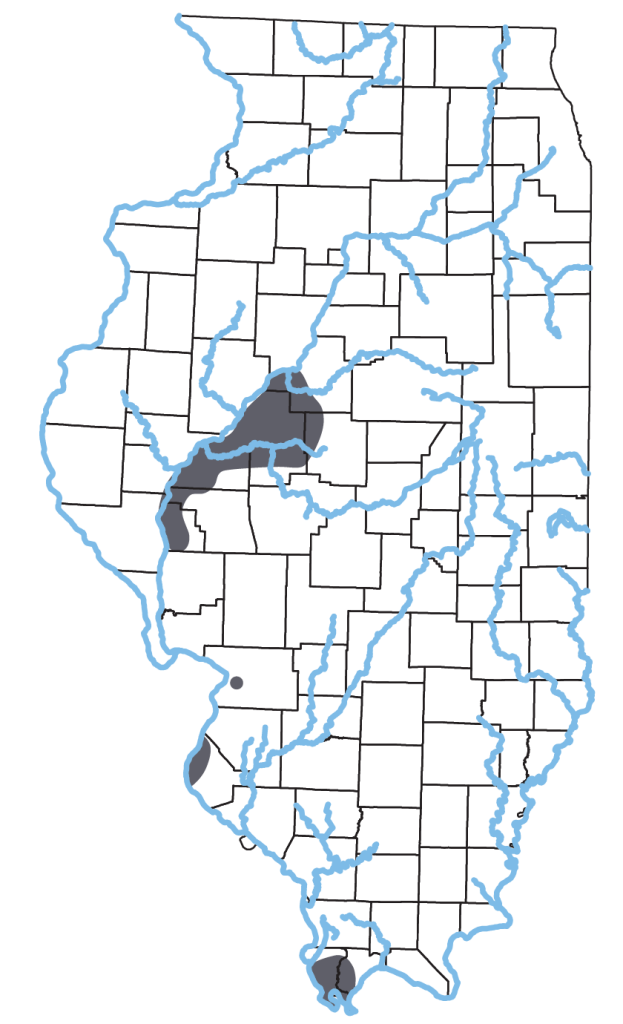Pseudacris illinoensis (Smith, 1951)

Key Characters: Stout toadlike body; no toe pads; robust forearms; dark masklike stripe from snout to shoulder; dark spot under eye; V- or Y-shaped mark between eyes.
Similar Species: Upland Chorus Frog, Western Chorus Frog, Boreal Chorus Frog. See Key to Frogs & Toads of Illinois for help with identification.
Subspecies: None recognized.

Description: Small (up to 4.7 cm SVL) tan to gray frog with dark brown or black lines on back. Belly white. Skin granular rather than smooth. Throat (vocal pouch) of male dark during breeding season.
Habitat: Sand prairies and remnants such as sandy agricultural fields and waste areas. Burrows in sand and emerges after heavy, early spring rains to breed in nearby flooded fields, ditches, and other vernal ponds.
Natural History: Unusual because it digs forward with its stout front legs, rather than backward like the spadefoot and toads. Diet consists of small insects. Spends most of life underground, coming to surface during rain to breed for a few weeks during February to April. Breeding call is a series of clear high-pitched whistles. Eggs are laid in small, jelly-covered clusters attached to twigs and branches underwater. Embryos hatch in a few days and tadpoles transform in about two months.
Distribution Notes: Known in Illinois from four disjunct areas of sandy soils. The Monroe County population has not been verified in several decades and its status is unknown. The Madison County population is restricted to a very small area of sand and has also not been verified in several years. Extensive surveys are needed for both populations.
Status: Threatened in Illinois. Threats include drainage and cultivation of breeding ponds and adult habitat and sand mining.
Etymology: Pseudacris – pseudos (Greek) meaning lie; -akris (Greek) meaning locust; illinoensis – (Latin) “of Illinois”.
Original Description: Smith, P. W. 1951. A new frog and a new turtle from the western Illinois sand prairies. Bulletin of the Chicago Academy of Sciences 9: 189–199.
Type Specimen: Holotype: INHS 5982.
Type Locality: “three miles north of Meredosia, Morgan County, Illinois”
Original Name: Pseudacris streckeri illinoensis Smith, 1951
Nomenclatural History: The Illinois Chorus Frog was originally named as a subspecies of Psuedacris streckeri. Mitochondrial DNA evidence supports a paraphyletic relationship between P. streckeri and P. illinoensis (Moriarty and Cannatella 2004. Phylogenetic relationships of North American chorus frogs (Pseudacris: Hylidae). Molecular Phylogenetics and Evolution 30: 409–420). Pending further investigation, most authorities consider illinoensis a full species.


